Class 9 IT 402 Unit 1: Communication Skills Notes for session 2022-23. The best Communication Skills Class 9 Notes that cover all points from NCERT.
In this post, we have shared Class 9 IT Communication Skills Notes that you can follow to full marks in your IT exam. These notes are clear, concise and to the point and will save you a lot of time.
Unit 1: Communication Skills
A person who can clearly put forward his/her ideas in front of other people is said to have good communication skills. Good reading, writing, listening and speaking skills are necessary for effective communication.
Communication Skills Class 9 Notes
Let’s start studying our first unit communication skills with the notes given below. We have covered all the NCERT portions in these notes so you need not worry about anything.
Session 1: Introduction to Communication
What is Communication?
Communication means sharing of information or ideas, this could take place either between two individuals or a group of individuals.
Importance of communication
If you have good communication skills, you can Inform, Influence, and Express your feelings effectively.
- Inform: To convey a piece of particular information or a fact. For example – I got late because I was stuck in heavy traffic.
- Influence: To influence someone to take a particular action that you want. For example – Influencing the audience to buy your products.
- Express Feelings: Sharing how you feel about an event or a person. For example – Expressing your love towards your parents.
Elements of Communication
Communication is an exchange of information between two parties, one who conveys the information and the other who receives the information.
Speaking and writing are examples of giving information.
Reading and listening are examples of receiving information.
Perspectives in communication
Perspectives are ideas, views, or fixed ways of thinking. This affects our conversation a lot. For example, you have a fixed view about a person being rude towards you, so you communicate with that person in a particular way, even when that person is being friendly you assume that to be rude in an indirect way.
Factors affecting Perspectives in Communication
- Language
- Visual Perception
- Past Experience
- Prejudice
- Feelings
- Environment
- Personal factors
- Culture
Effective communication
Effective communication occurs when we follow the basic principles of communication – The 7 C’s of effective communication.
- Clear
- Concise
- Concrete
- Correct
- Coherent
- Complete
- Courteous
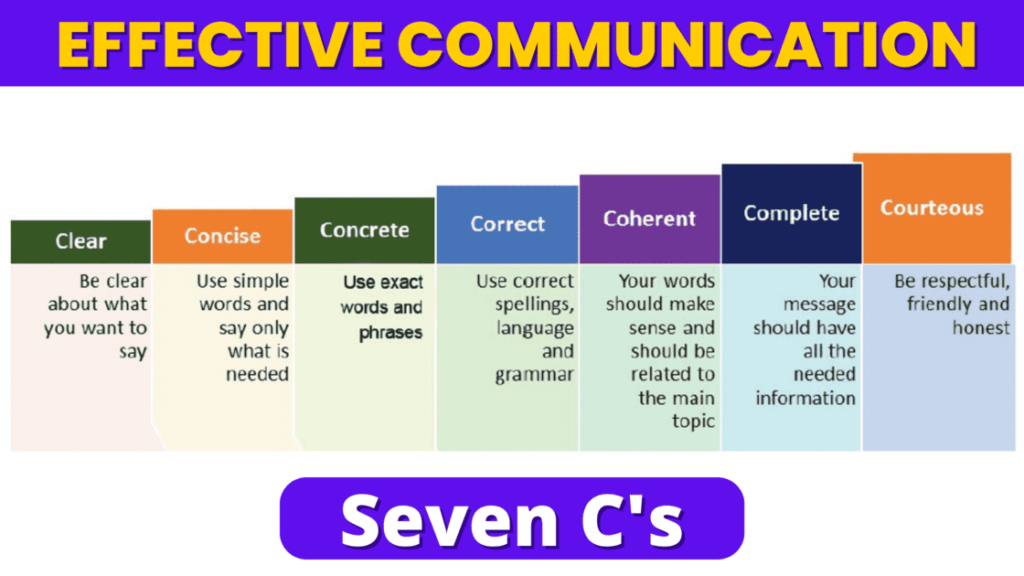
Session 2: Verbal Communication
Verbal Communication: Sharing of Information by using words is called Verbal Communication.
Type of Verbal Communication
- Oral or Spoken Communication: This form of verbal Communication type involves talking.
- Written Communication: Written words or typed words are involved in this type of verbal communication.
Advantages of verbal communication
- Verbal Communication is very quick and easy.
- We get fast responses from other parties.
- We can change communication according to the other person’s reply.
Disadvantages of verbal communication
- Cultural difference between the two parties creates a communication barrier – Like the use of different languages, accent, etc.
- Verbal communication depends only on words, and sometimes the meaning of some words could be confusing and misunderstanding between the sender and receiver may take place.
Public speaking
Speaking in front of a large number of people is called public speaking. Many people become nervous when they speak in front of a large group.
To become fearless and confident in public speaking, you can follow the 3P method –
- Prepare
- Practice
- Perform
Session 3: Non-Verbal Communication
The type of communication in which words are not used to send the information, rather we use signs, gestures, expressions etc to send our message to the other person.
Importance of non-verbal communication
- In our daily conversation, most of the communication takes place through body language, voice controls and other non-verbal forms.
- Using the right body language while speaking makes our message more effective.
- Using the right body language while speaking makes us look more confident.
- If in case we can not use verbal communication we can share the message through our gestures.
Types of Non-verbal Communication
- Facial Expression
- Posture
- Gestures or Body Language
- Touch
- Space
- Eye Contact
- Paralanguage
Paralanguage is the tone of our voice, speed and volume that makes a difference in the meaning of the communication.
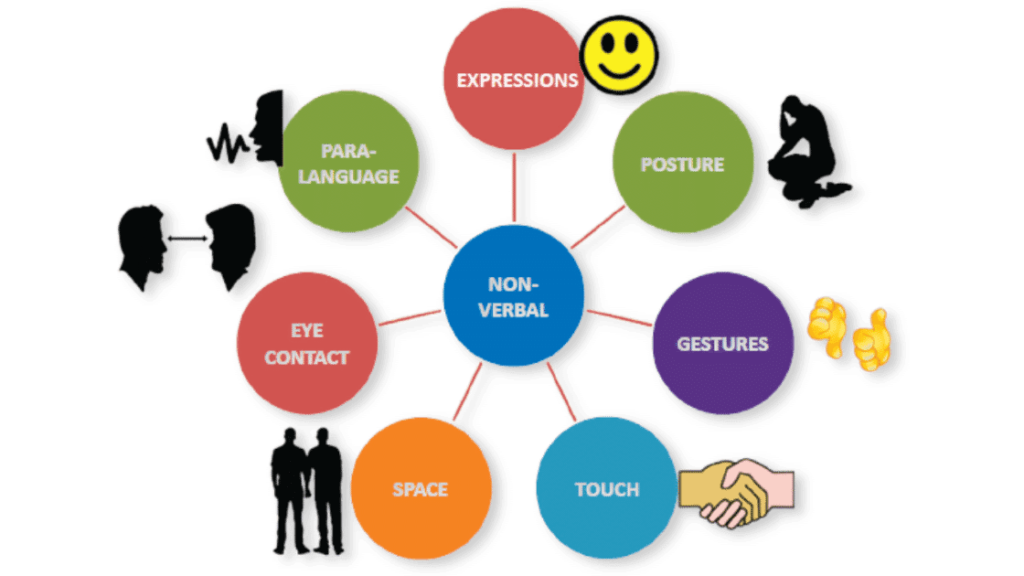
Visual communication
Visual communication involves sharing messages or information with the help of pictures or images. The main advantage of visual communication is that we do not need to learn any language to understand the message, it is simple information conveyed through images which remains the same in various places.
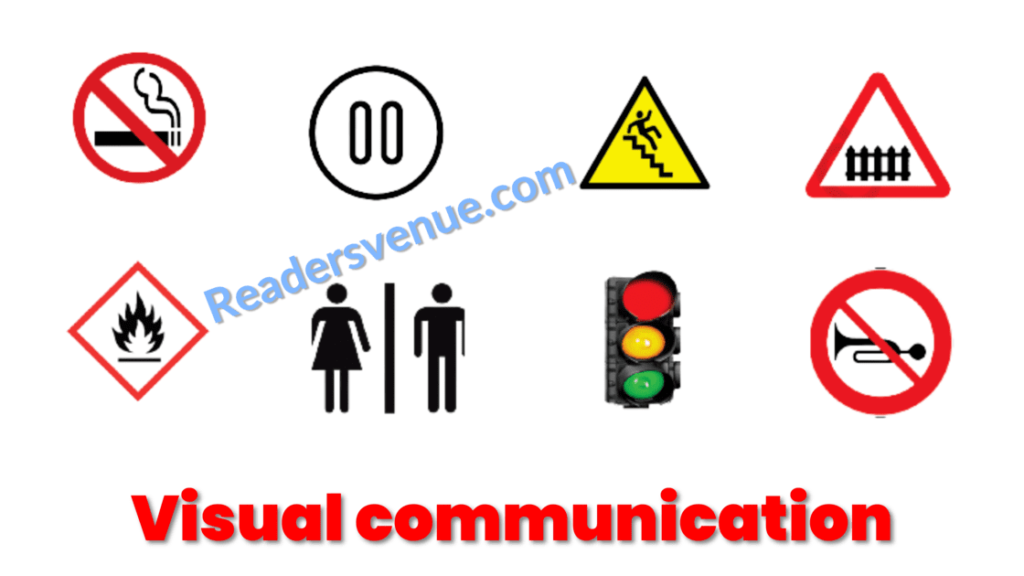
Session 4: Writing Skills: Parts of Speech
A sentence is a group of words that communicates a complete thought (Example: Raju goes to school).
A group of words, which does not make complete sense, is known as a phrase (Example: Raju goes).
Using capitals: The first word of each sentence is a capital word.
Each letter in the word MINTS –
- Months – Capitalise the first letter in all the names of months.
- The letter – Capitalise ‘I’
- Names – Capitalise the first letter in the name of people, places and days.
- Titles – Capitalise the first letter used in titles used before people’s names. Eg – Dr.
- Starting letter of sentences
Punctuation: It is a set of marks, such as the full stop and the comma, which help our separate parts of a sentence and explain its meaning.
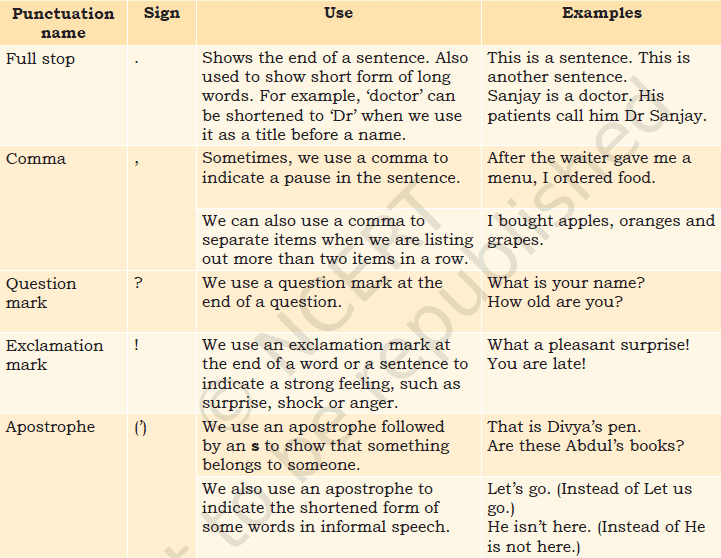
Basic parts of speech
There are eight basic parts of speech – noun, pronoun, verb, adjective, adverb, preposition, conjunction and interjection.
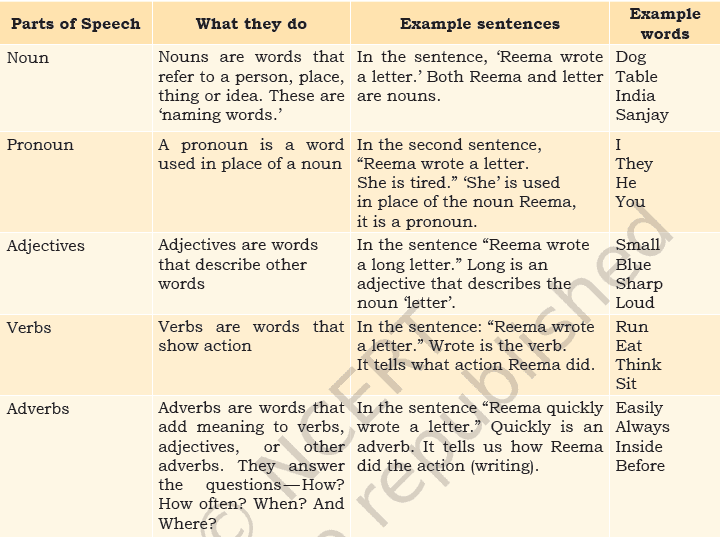
Supporting parts of speech types –
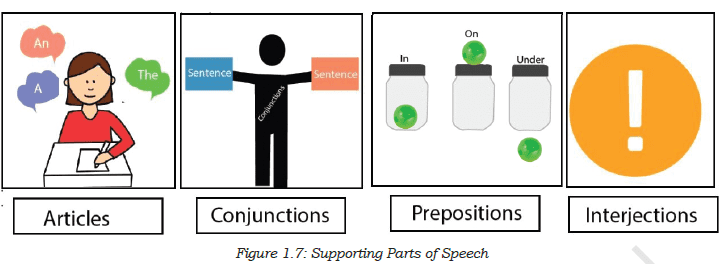
Session 5: Writing Skills: Sentences
Parts of a sentence: A subject is a person or thing that does an action. A verb describes the action. The object is the person or thing that receives the action.

Types of objects: The object in a sentence can be either direct or indirect.
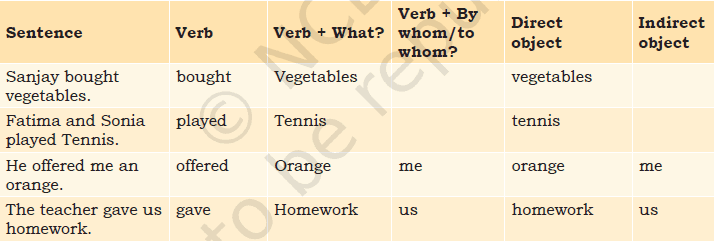
Types of sentences
Active and passive sentences
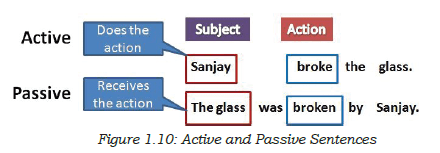
Types of sentences (according to their purpose)
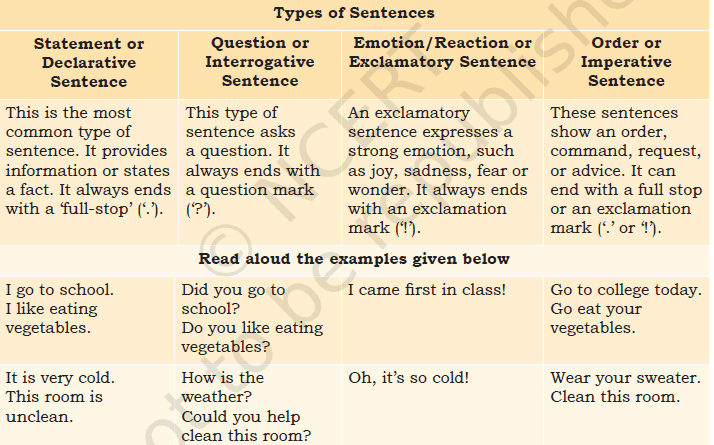
Paragraphs: A group of sentences forms a paragraph.
More Resources – Class 9 IT 402 Book PDF, CBSE Academic Website
Session 6: Pronunciation Basics
For clear transmission of our message to the other person, it is very important to pronounce the words clearly so that the other person understands our message. To express yourself in a clear and confident way you need to know the correct pronunciation of words.
Phonetics is the study of sounds we make while speaking.
Vowels: The English alphabet has five vowels (a, e, i, o and u) but 12 vowel sounds. This means most vowels can be pronounced in different ways.
Diphthongs (combination sound of two vowels): We make a diphthong sound when we combine two vowels. Diphthongs start as one vowel sound and go to another.
Consonants: A consonant sound is any sound that is neither a vowel nor a diphthong sound.
Session 7: Greetings and Introductions
Greetings
There are many different ways to greet a person. The greetings and replies to a greeting at work are different from the greetings and replies given to a friend.
Types of greetings:
Formal greetings are used if you do not know the person. It is used to greet seniors, elderly people or people with whom we have formal relations like teachers or customers.
Informal greetings are used when you talk to friends, family or a known person.
Introducing yourself and others
You can introduce yourself by telling your name and some general information like your hometown, your job or subjects as a student, your interests, etc.
We can introduce someone to others by telling them their name, what they do, how we know them, or even by describing something interesting about them.
Session 8: Talking about Self
You usually start by telling your name. Then you can talk about other things, such as what you do, your age, where you live, or even about the things or activities that you like or dislike.
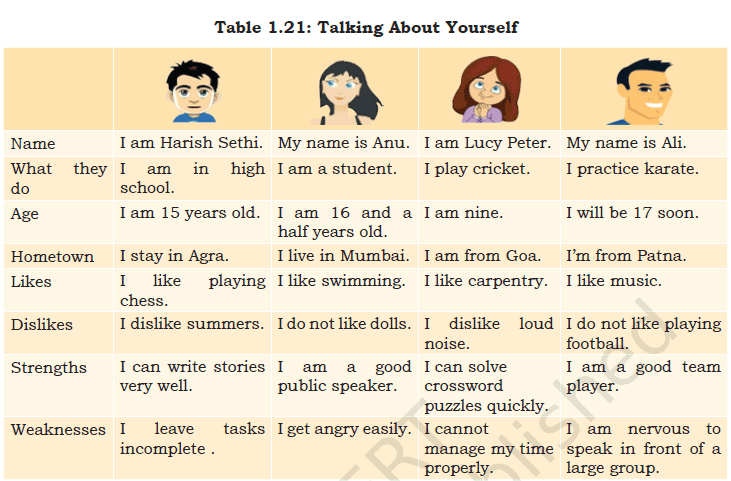
Filling a form
Sometimes, instead of talking, we have to write about ourselves, like the way we fill our information in a form. A form is a typed or printed page with blank spaces for information. Different forms require different information, so it is necessary to read the form carefully and then fill in the accurate details that it requires.
Session 9: Asking Questions I
Asking questions helps us gain knowledge and information, avoids doubt or confusion, and it also helps us to start talking to people by asking about them and their ideas.
How to make sure that we have complete information?
Using the simple method of ‘5W+1H’ we can make sure that we have all the information that we will need for a particular work.
Question Words: Who, Where, When, What, Why and How.
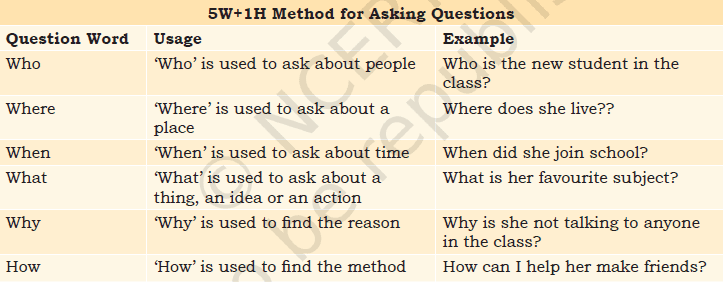
Session 10: Asking Questions II
A question is a sentence, phrase, or word that either asks for information or is used to test someone’s knowledge. We always use a question mark (?) at the end of a question.
Types of questions: There are two types of questions – Open-ended, and Close Ended.
Open Ended questions are those which are answered in detail, these questions can be answered in various ways.
Close Ended questions have short answers or mostly Yes/No type answers, there are very less ways by which you can answer these questions.
So, you have finally reached the end of Communication Skills Class 9 Notes, I hope these notes helped you prepare for your exams. If you liked these notes consider sharing them with your friend. Also, check out other units notes on our website, all the notes are freely available to read.
Thank you so much for reading the Communication Skills Class 9 Notes till the very end. All the best for your exams.
Elements of Communication
it was great thank you so much.